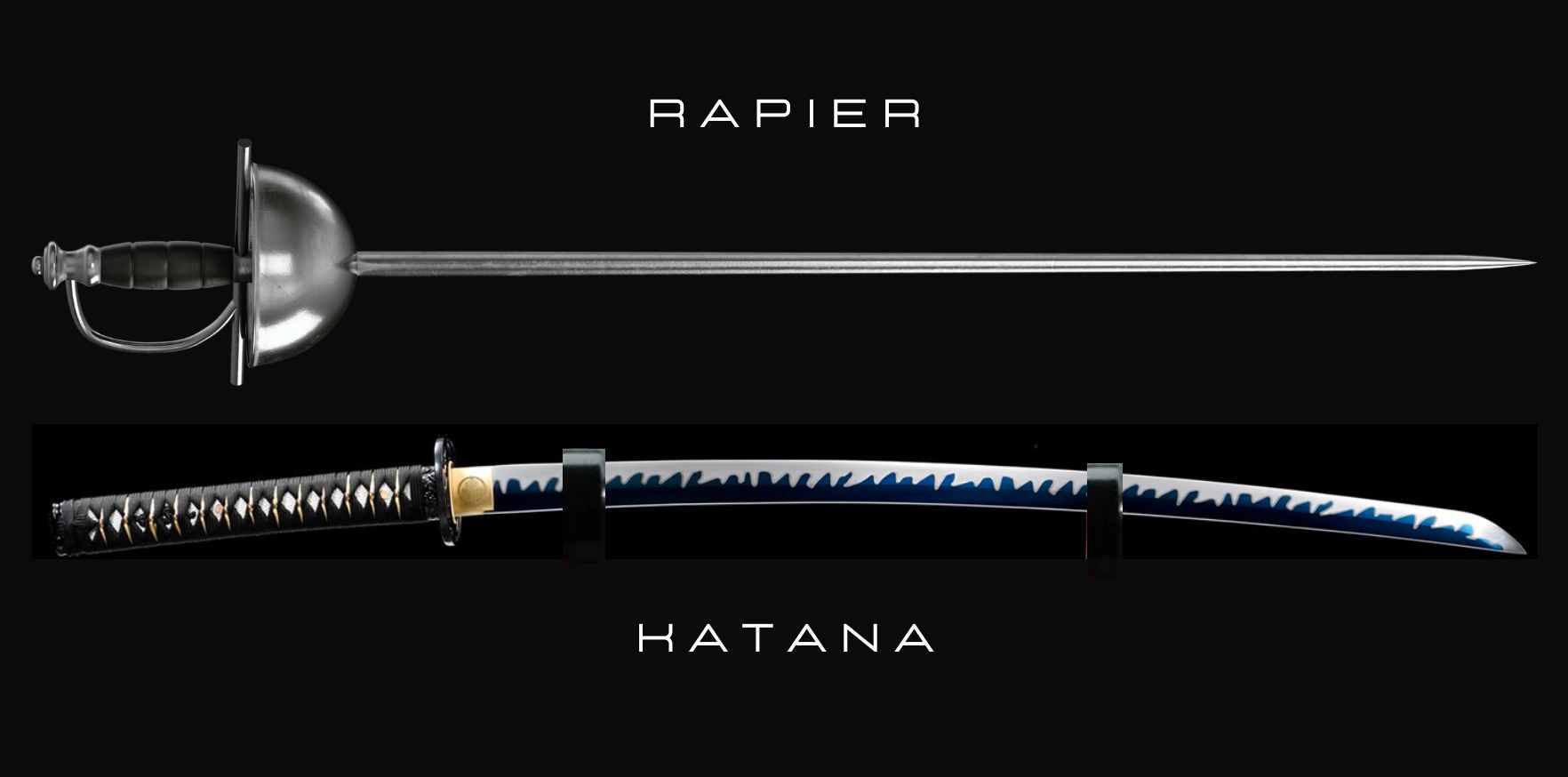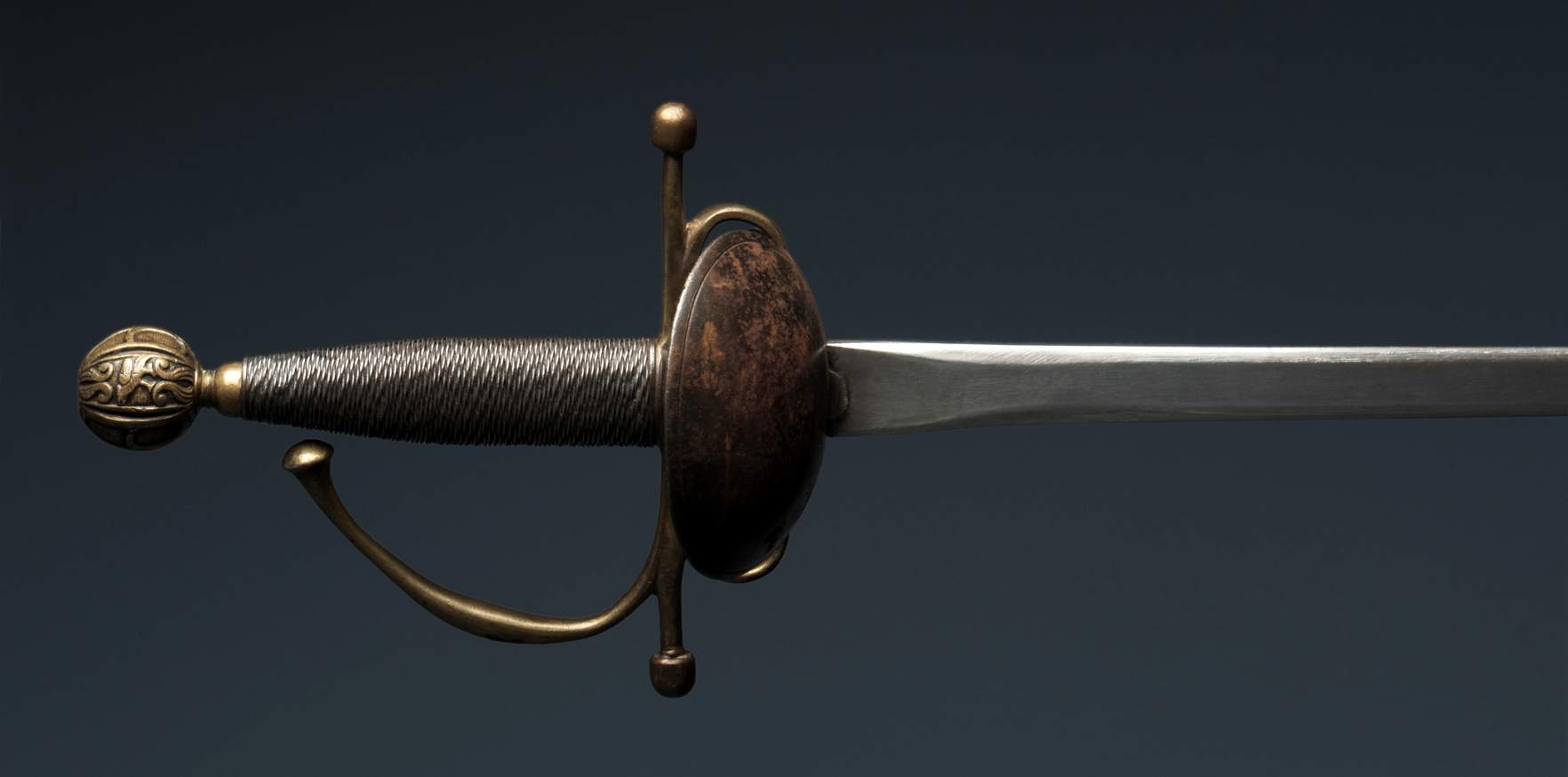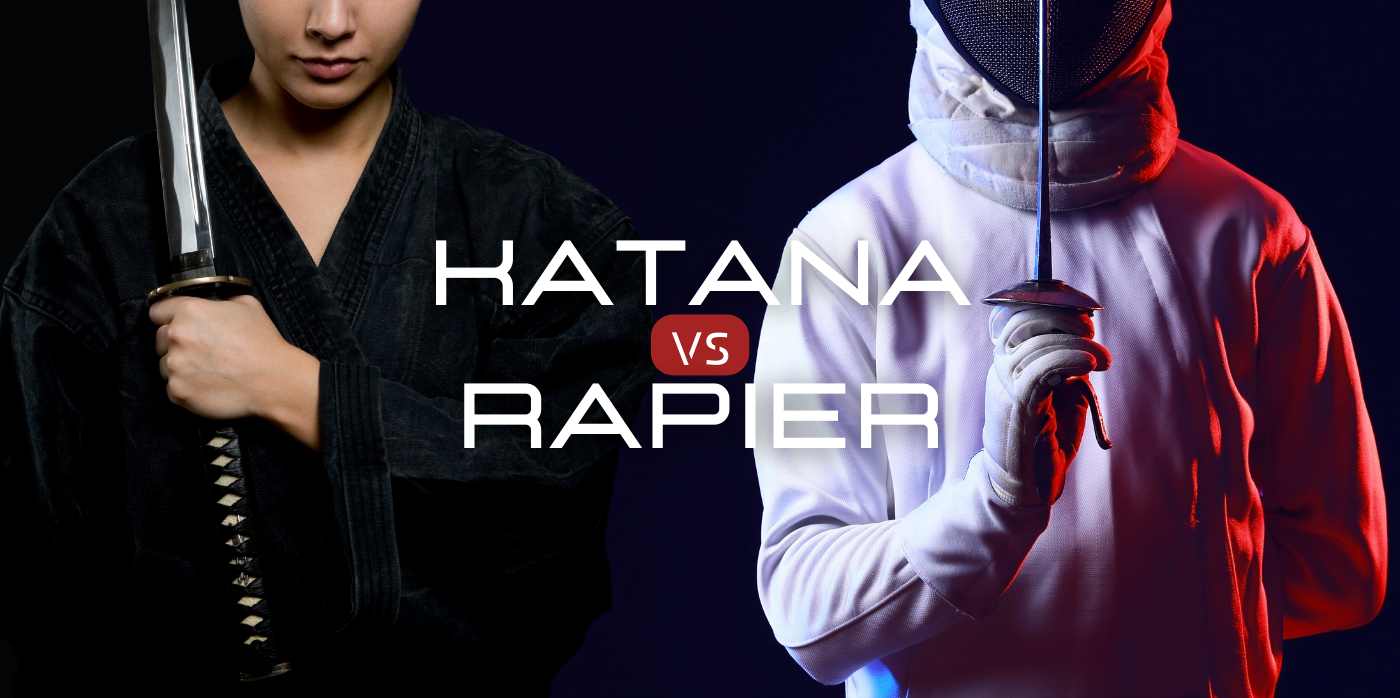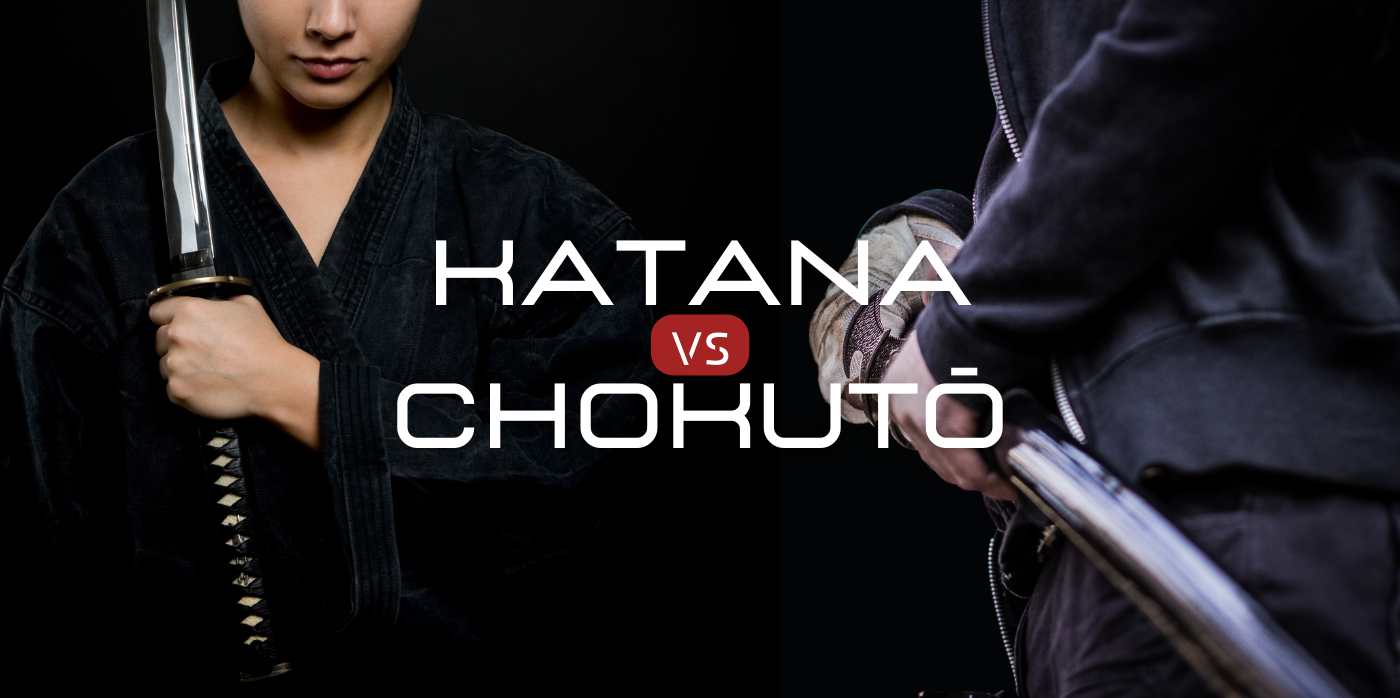As we delve into the rich tapestry of historical swords, the Japanese Katana and the European Rapier distinguish themselves through their distinctive design, exquisite craftsmanship, and specialized function. Each epitomizes a masterful blend of form and function in their respective cultural contexts, providing us with compelling perspectives on the progression of sword-crafting skills, martial arts traditions, and the historical epochs they graced. In this article, we'll juxtapose these two remarkable blades to illuminate their singularities and commonalities, offering an engaging exploration into these iconic swords.
1. Understanding the Katana and the Rapier
Renowned for its lethal slashing ability and accuracy, the Katana stands as a distinctive emblem of the Samurai warrior class. Its signature design features include a uniquely curved blade, a two-handed grip, and an elongated hilt.
In contrast, the Rapier, a widely favored sword during the Renaissance period in Europe, was primarily used by civilians. Its use was predominantly in self-defense scenarios and duels. It is a thin, light, and sharp sword primarily designed for thrusting attacks.

2. Katana Craftsmanship vs. Rapier
The Katana is made using a traditional Japanese technique called differential heat treatment, creating a hardened edge and a resilient spine. It is revered for its aesthetic value, with intricate details on the blade and the tsuba (guard).
The Rapier, meanwhile, was made by skilled European smiths who forged flexible, yet strong blades suitable for deft maneuvers and thrusting attacks. It has a complex hilt design for hand protection, reflecting the Renaissance's artistic sensibilities.
3. Katana Parts vs. Rapier
3.1 Blade
The Katana has a curved blade with a single sharp edge, designed for slashing. The Rapier has a straight, narrow blade designed for precise thrusting.
3.2 Guard
The Katana's tsuba is a circular or squared guard with intricate designs. The Rapier's guard is more elaborate, often featuring a complex network of rings and bars to protect the hand.
3.3 Handle
Both swords have two-handed grips, but the Katana's is longer, allowing for more versatility in combat. The Rapier's grip is typically wire-wrapped for a secure hold.
3.4 Pommel
The Katana's pommel, or kashira, is generally simple and functional. The Rapier's pommel is larger and more decorative, often used to balance the long blade.

4. Katana Characteristics vs. Rapier
4.1 Blade Design
While the Katana is renowned for its curved blade and sharp edge, the Rapier stands out with its straight, needle-like blade designed for precise thrusts.
4.2 Weight of the Blade
Katana's blade, despite being wider, is generally lighter, 1.76lbs to 2.64lbs (800g to 1.2kg), than that of a Rapier 2.20lbs to 2.64lbs (1kg to 1.2kg). This difference in weight is due to the Rapier's length and the reinforcement needed for thrusting attacks.
4.3 Sharpness
Both swords are incredibly sharp, but they are sharpened differently to serve their purposes: the Katana for cutting and the Rapier for thrusting.
4.4 Grip
The Katana is held with both hands, providing power and control for slashes. Conversely, the Rapier is often wielded with one hand, allowing for agile, swift thrusts.
4.5 Balance
The Katana is balanced towards the hilt, making it efficient for swift, dynamic movements. The Rapier, on the other hand, is balanced closer to the guard to enhance control during thrusting attacks.
4.6 Durability
Both swords are durable, thanks to the high-quality materials and forging techniques. However, the Katana's differential heat treatment makes it especially resilient in combat.
4.7 Reach
The Rapier typically has a longer reach than the Katana due to its length, providing an advantage in duels.

5. Katana Combat Style vs. Rapier
The combat methodology of the Katana, evident in martial arts forms such as Kenjutsu, Iaido, and Kendo, prioritizes speedy, potent slices from multiple directions.
Intriguingly, the legacy of the rapier continues to live on in the modern world. The sport of fencing, which encapsulates the swift, precise movements and the strategic approach that characterized rapier combat, has roots in the Renaissance tradition of swordsmanship. Today, fencers around the world, whether in training, competition, or at the Olympic level, still embody the agile and tactical spirit of the original rapier duelists.
And if, like us, you've always wondered what a fight between a katana and a rapier would be like, we've got the answer for you!
6. Katana Maintenance vs. Rapier
Both the Katana and the Rapier require regular maintenance to preserve their functionality and beauty. This includes cleaning, oiling, and careful storage. However, due to its complex hilt design, the Rapier may require more meticulous cleaning to prevent rust and corrosion.
7. History and Origin of the Katana vs. Rapier
The Katana was first developed around the 12th century, becoming a symbol of the Samurai class. It reflected the change in warfare, shifting from large-scale clashes to more personal combat.
The Rapier emerged in the 16th century during the Renaissance period in Europe. It was a civilian weapon, often used in duels and for self-defense, reflecting the changing societal structure and the rise of civilian martial arts.
Conclusion
The Katana and the Rapier, both iconic swords from different cultures, offer fascinating insights into the art of sword making, the evolution of martial arts, and the historical contexts they emerged from. By comparing these swords, we can appreciate the diverse approaches to swordsmanship and the timeless appeal of these magnificent weapons.





